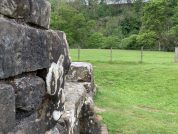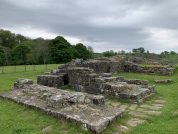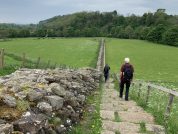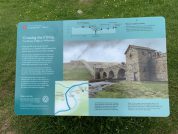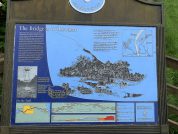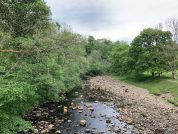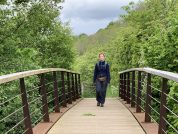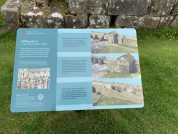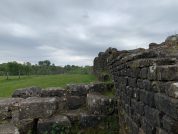Hadrian's Wall - Willowford Bridge Abutment
Roman Bridges
Willowford Bridge abutment consists of the remains of the foundations of a bridge abutment, which carried the Wall over the River Irthing, exposed on the east bank. Excavations were carried out on the site in 1924, 1940 and between 1985 and 1986. These uncovered a large tower and splayed abutment foundation, which represented the first phase of the original narrow bridge design. A wider bridge was later built with a massive projecting pier positioned further west. The sequence of development is mirrored where the Wall crosses the North Tyne at Chesters Roman Fort. The bridge was constructed of stonework bonded with dovetail cramps. The foundations of two further bridge piers lie 3 metres below the surface of the present river bank. The river is believed to have flowed immediately west of the abutment in a rocky gorge.
Summary of Phases of Willowford Roman Bridge
- Willowford Roman Bridge Phase 1: Around AD 122- 160 – This was a stone, round arched bridge, probably with a tower on each abutment to allow access to the river back from the top of the wall. The bridge and part of the wall were destroyed by flooding.
- Willowford Roman Bridge phase 2: Around AD 160-180 – This bridge had a huge abutment, pierced by tow sluices to allow flood water to pass underneath. Sockets in the abutment may have been for timber beams, hinting that the bridge’s upper structure was of wood. A new tower was built further east than the original.
- Willowford Roman Bridge phase 3: around AD 205-207 – The abutment of the final bridge was much broader. The tower was demolished and a ramp built over its remains to carry a military road. The bridge was supported on large round arches.
Sites near Hadrian's Wall - Willowford Bridge Abutment
- Hadrian's Wall - Milecastle 49 - Harrow's Scar (0 km)
Hadrian's Wall Milecastle - Hadrian's Wall - Turret 48b (Willowford West) (0 km)
Hadrian's Wall Turret - Banna (Birdoswald) Vicus (1 km)
Vicus - Hadrian's Wall - Fort - Birdoswald (Banna) (1 km)
Hadrian's Wall Fort and Signal Station - Hadrian's Wall - Turret 48A (Willowford East) (1 km)
Hadrian's Wall Turret - Throp Fortlet (1 km)
Fortlet and Stanegate Fort - Hadrian's Wall - Milecastle 48 - Poltross Burn (1 km)
Hadrian's Wall Milecastle - Mains Rigg Signal Station (2 km)
Signal Station - Hadrian's Wall - Milecastle 50 - High House (2 km)
Hadrian's Wall Milecastle - Crooks Temporary Camp (2 km)
Marching or Temporary Camp
